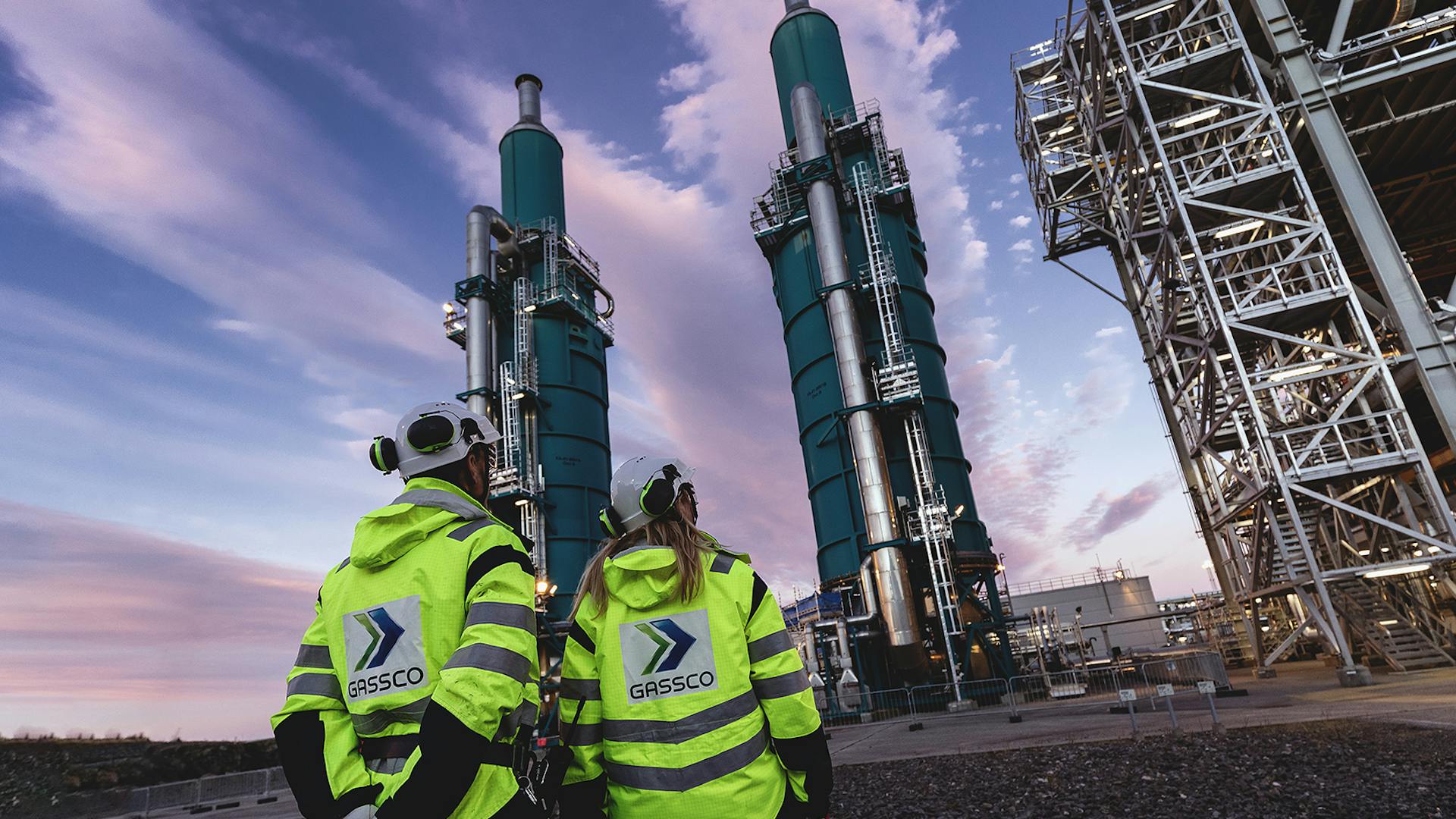



We move energy
so others can move forward
Celebrating 25 years of moving energy
Since 2001, Gassco has ensured the safe and efficient transport of natural gas from Norway to millions of people across Europe. Twenty-five years on, we continue to move society forward through innovation, collaboration and a clear commitment to a sustainable energy future.
The combination of trust, collaboration, skills and knowledge is key. Our innovative efforts will help ensure a sustainable energy supply for the future.
Gas nominations
Real-time aggregated gas nominations to terminals in Europe. You will also find information about planned and unplanned events in the gas transport system.
MSm³/d
Germany
MSm³/d
France
MSm³/d
Belgium
MSm³/d
Great Britain
MSm³/d
Other
MSm³/d
Total
Energy delivered to Europe so far this year*
So far this year, Gassco has transported 1.37 BCM of natural gas to Europe. In 2024, we delivered a total of 117,6 BCM of natural gas, ensuring reliable energy supply to the European energy market. In energy terms this accounts for 1295 TWh – an energy amount that could power approximately 326 million homes for a whole year.

Expects high Norwegian gas deliveries into the winter season
October marks the start of the gas year and peak export season from the Norwegian continental shelf. Following successful maintenance, we enter winter with stable operations and strong deliveries.
How it works
60
gas fields
Gassco receives gas from almost 70 fields on the Norwegian continental shelf. The natural gas is extracted offshore and is first stabilized on the production platform by removing water vapor and easily condensable components. The gas is then transported through pipelines for processing if necessary.
3
processing plants
Once the gas is extracted from the fields, it often needs to be processsed. Gassco operates the processing facilities at Nyhamna, Kollsnes, Kårstø and Vestprosess. A processing plant cleans, dries, and compresses the gas before it is transported as dry gas through pipelines to Europe.
8600
pipelines (km)
At the bottom of the North Sea lies the world’s largest fully integrated pipeline system for transport of natural gas.
Gassco is responsible as operator for transporting Norwegian gas to continental Europe and the UK through its network of pipelines. The total length of the pipeline network is 8600 kilometers, which is roughly the distance from Oslo to Bangkok.
6
Receiving terminals
Gassco operates six gas receiving terminals in Europe: St. Fergus and Easington in the United Kingdom, Dornum and Emden in Germany, and Zeebrugge and Dunkerque in Belgium and France respectively.
At the receiving terminals all residues of liquids and particles are removed before pressure and temperature adjustments. After measurement and quality control, the gas is ready for the market.
800
million people
The gas that arrives at the receiving terminals in Europe is transported and distributed to the market. Measured in energy quantity, Norway transports enough gas to meet the annual needs of 800 million people*. Norwegian gas accounts for 30 percent of the EU’s gas imports and covers approximately 9 percent of the total energy consumption.
*Estimated average EU consumption, source: Eurostat.
Infrastructure for the future
In parallel with ensuring the journey of the gas from field to marked, Gassco also plans for the future. Our task is to look ahead and find new effective solutions. We will continue to look after the energy supply of today, while simultaneously prepare the infrastructure for the coming energy transition.
Europe needs Norwegian natural gas, and they should feel safe that they will get it. Today and in the future.